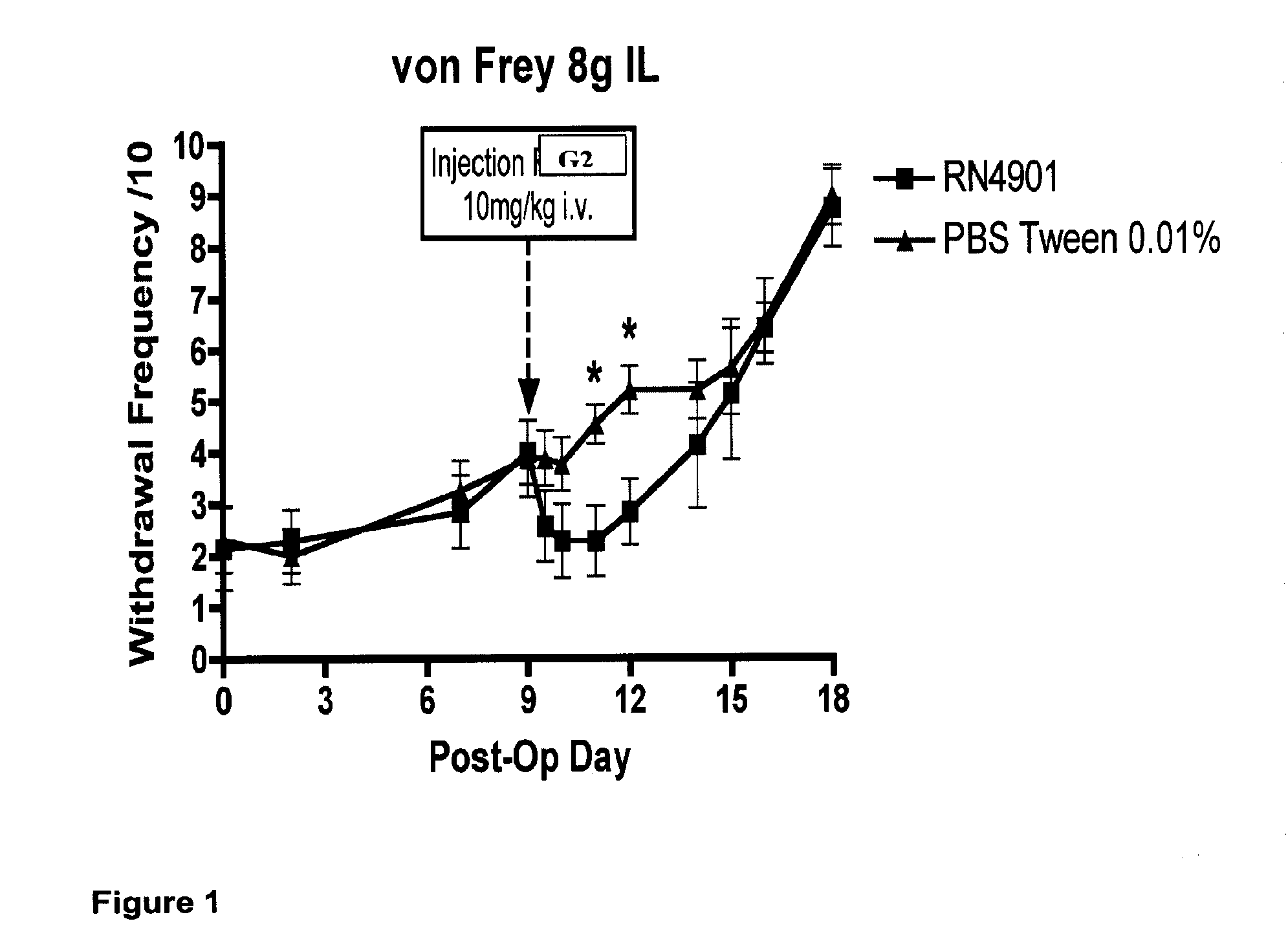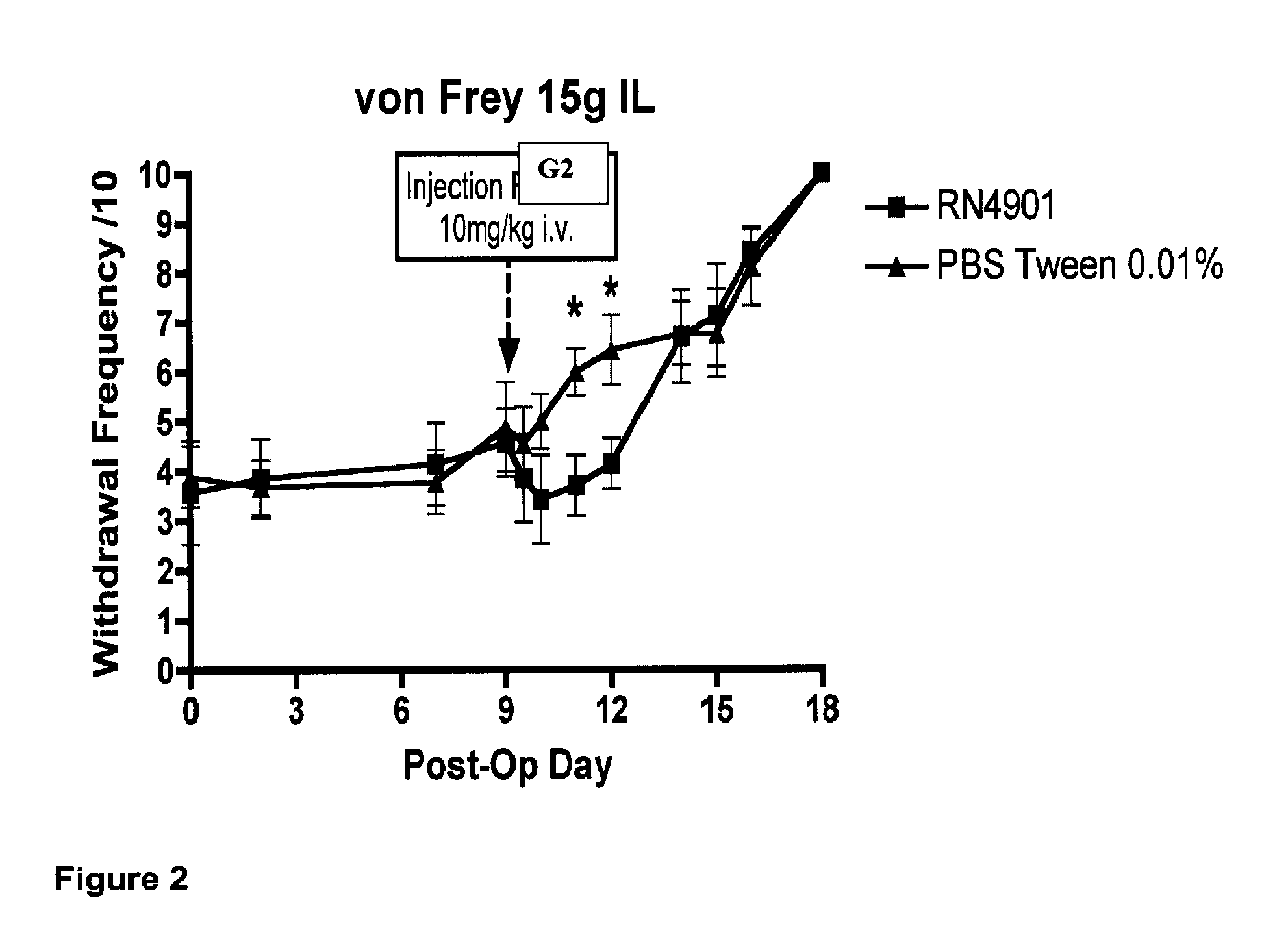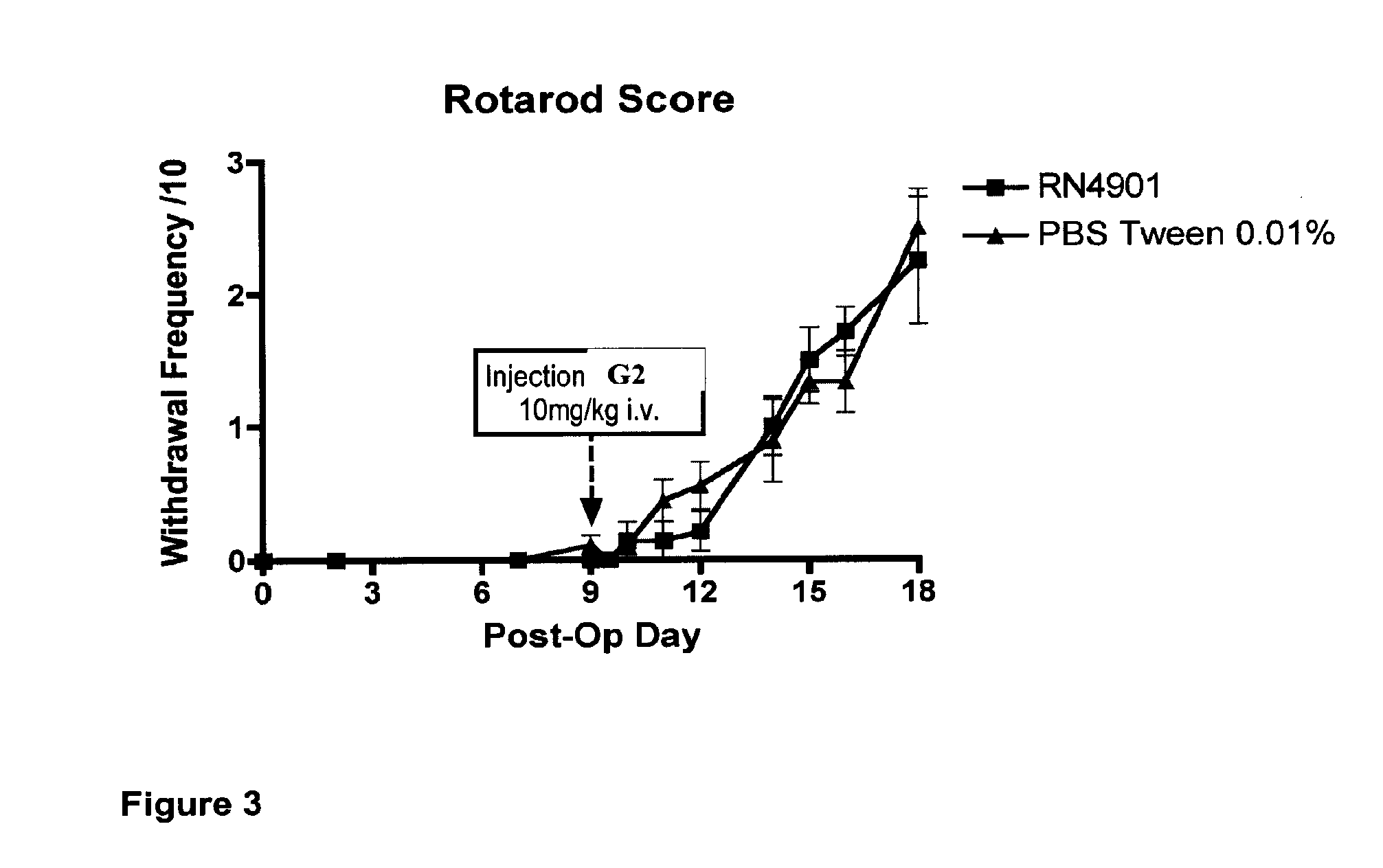Methods of treating chronic pain
a technology of chronic pain and anti-cancer antibody, which is applied in the field of anti-cancer antibody, can solve the problems of no beneficial or protective function, both classes of drugs can produce severe side effects, and invalidate 2.7 million people in the uk due to chronic pain conditions
- Summary
- Abstract
- Description
- Claims
- Application Information
AI Technical Summary
Benefits of technology
Problems solved by technology
Method used
Image
Examples
example 1
Set Up of the Rodent Cancer Mechanistic Pain Model
[0159]Tumour cells used are syngeneic MRMT-1 rat mammary gland carcinoma cells donated from the Novartis Institute (London). The cells are cultured in RPMI 1640 (Gibco) with 10% foetal bovine serum (FCS), 1% L-glutamine 2% penicillin / streptomycin (Gibco). Two brief washes are carried out with 0.1% w / v trypsin to release those cells which adhere to the flask, and then quenched with an equal volume of 10% FCS, followed by centrifugation of the solution for 3 minutes at 1200 rpm. The pellet is washed and resuspended in Hanks medium, and the concentration of cells calculated using a Haemocytometer, with trypan blue staining to determine the number of dead MRMT-1 cells. The final concentration of 3×103 cells was then obtained by diluting the solution according to the number of cells seen. The final solution was kept on ice until time of injection.
[0160]Male Sprague-Dawley rats weighing close to 170 g at time of surgery were used to genera...
example 2
Assessment of Rodent Anti-CGRP Antibody G2 in the Cancer Pain Model
[0161]Testing behaviour towards mechanical stimuli uses von Frey filaments (North Coast Medical Inc., USA) to the plantar surface of both the ipsilateral and contralateral hindpaw. The rats were placed in a Perspex cubicle with a mesh floor and allowed to acclimatise for 10 minutes. Each von Frey was applied 10 times to each hindpaw alternating between the ipsilateral and contralateral, for duration of 2-3 seconds each time. Von Frey Filaments used have bending forces of 1, 5, 9 and 15 g, and a period of 5 minutes was left between ascending von Frey forces. A nocifensive response (a lift) is defined as a brisk withdrawal of the hindpaw and the number of lifts for each paw at each von Frey are recorded (maximum of 10) and expressed as a percentage response.
[0162]An assessment of the efficacy of rodent anti-CGRP antibody G2 in attenuating hypersensitivity to a wide variety of static mechanical, cooling and integrated s...
example 3
Rota Rod Test for Motor Impairment
[0167]A further end point tested in the bone cancer pain model was ambulation (by rotarod). The test is to obtain a measurement of locomotor impairment comparing antibody treated with control animals, each subjected to the same test under the same conditions. The rota rod test consists of 4 rotateable drums divided by flanges with a motor-driven drum accelerated (Ugo Basile, Comerio, Va., Italy). For a given trial, a rat is placed on the rotating rod and the rotation speed is accelerated from 4 to 16 rpm in 2 min. The time of maximal performance is typically set at 120 sec. Each animal generally receives three trials per day, at 1 hr intervals, for several consecutive days post surgery. The latency to fall off the rod is represented as mean of the three trials.
[0168]No differences were found between the antibody G2 group and the vehicle group in the latency to fall from the rotarod during forced ambulation (FIG. 3). This suggests that G2 does not im...
PUM
 Login to View More
Login to View More Abstract
Description
Claims
Application Information
 Login to View More
Login to View More - R&D
- Intellectual Property
- Life Sciences
- Materials
- Tech Scout
- Unparalleled Data Quality
- Higher Quality Content
- 60% Fewer Hallucinations
Browse by: Latest US Patents, China's latest patents, Technical Efficacy Thesaurus, Application Domain, Technology Topic, Popular Technical Reports.
© 2025 PatSnap. All rights reserved.Legal|Privacy policy|Modern Slavery Act Transparency Statement|Sitemap|About US| Contact US: help@patsnap.com



